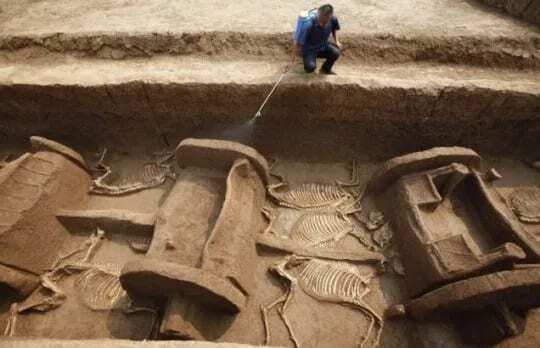Archaeologists have discovered a tomb in Luoyang, China during the excavation works in advance of the construction of a new hospital.
The team unearthed tomb that contains a vertical earthen pit with the remains of horses used to draw chariots. Other discoveries also include five chariots, bronzes and ceramics all dating from the early Western Zhōu Dynasty 3000 years ago.
The Zhōu Dynasty dates from 1046–256 BCE and through its political and military control, lasted longer than any other dynasty in Chinese history, however the Jī (Chinese: 姬) family only lasted during the Western Zhōu period.
Western writers often describe the Zhōu period as ‘feudal’ because the Zhōu’s early rule invites comparison with medieval rule in Europe. (The Chinese term for the Zhōu system is fēngjiàn 封建 ) However, this period was also one of prosperity, scholars and philosophy.
The origins of native Chinese philosophy developed its initial stages beginning in the 6th century BCE. The greatest known of these is Confucius, founder of Confucianism, and Lǎozǐ, founder of Taoism.
This recent discovery gives an unprecedented insight into the funeral customers from this period with archaeologists convinced, that the perfectly preserved tomb belongs to that of an official or scholar of standing.





